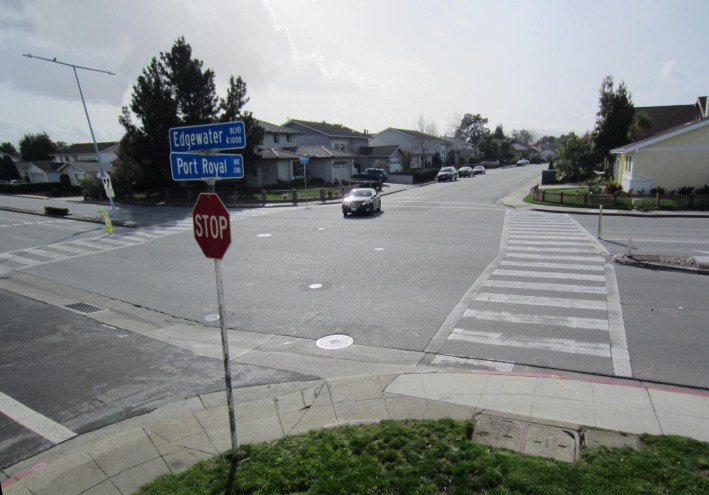
Many Foster City residents were shocked last month when their City Council responded to the injury of a 17-year-old girl by closing off the crosswalk at Edgewater Boulevard at Port Royal Avenue, where she was struck by a driver. Hundreds of residents petitioned the council to take other steps instead of installing "No Ped Crossing" signs and physical barriers. The council reversed its crosswalk closure decision last week, opting instead to install pedestrian-activated flashing lights.
The intersection's well-known hazards caught the City Council's attention after the driver of a 2014 BMW 528i slammed into a high school student who was walking in the crosswalk on Edgewater on January 24, breaking both of her legs and knocking her to the ground unconscious. She spent several days in Stanford Medical Center's intensive care unit but ultimately survived.
Mayor Charles Bronitsky places the blame for car crashes on both drivers and pedestrians not following traffic laws, and argues there's little cities can do to reduce traffic collisions. "It's an issue of personal responsibility, folks," he said. "There's nothing the government can do to make people be responsible. We gotta do the best we can to try to babysit adults."
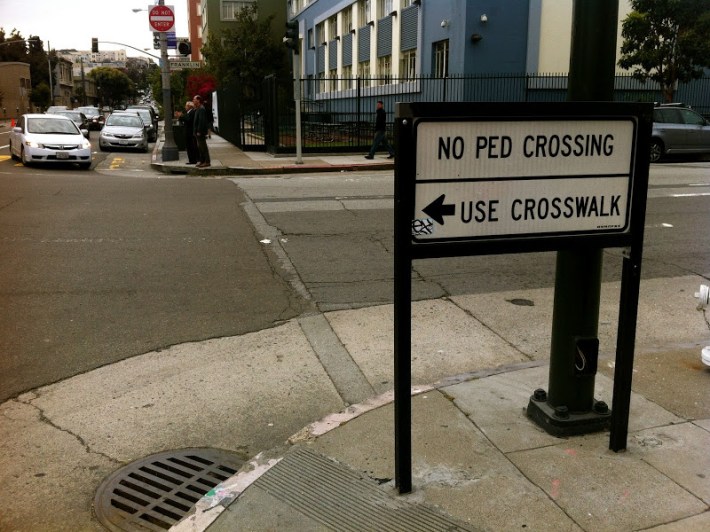
Council members Steve Okamoto, Art Kiesel, and Gary Pollard were on the verge of voting to install stop signs on Edgewater Boulevard during their February 3 city council meeting when Bronitsky warned of "potential legal repercussions" that could arise.
A 2012 traffic report authored by professional traffic engineer Steve Fitzsimons of Republic ITS, a subsidiary of Siemens that installs and maintains traffic signals, concluded that stop signs are "unwarranted" according to a state standard that recommends a street to have either more collisions (five annually) or higher car traffic volumes before they're installed. The report concluded that the left-turn conflicts, high pedestrian traffic (including many children), and poor visibility for drivers turning onto Edgewater from Port Royal were "not relevant," despite well-documented evidence to the contrary, including calls from residents to fix those hazards in emails to the city and at public meetings.
Fear of litigation helps explain the city's reaction. City Attorney Jean Savaree said that the city would lose its "design immunity" legal defense in the case of a lawsuit brought by the victim of a collision somehow caused by the stop signs.
"When you hire a traffic engineer and they make recommendations to you, if you follow those, you trigger what's called design immunity," Savaree said. "If you install a four-way stop where it's not warranted and you have a collision, the city is sued [on the basis] that you created a dangerous condition because you have not followed a professional engineer's advice."
Okamoto pointed out to fellow council members that other stop signs classified as "unwarranted" by exactly the same type of traffic engineer's report were previously installed at three other intersections after residents complained of unsafe conditions at those locations.
"I don't think there has been any liability issues at those intersections," said Okamoto. "In spite of the concern of legal counsel, I still support four-way stop signs."
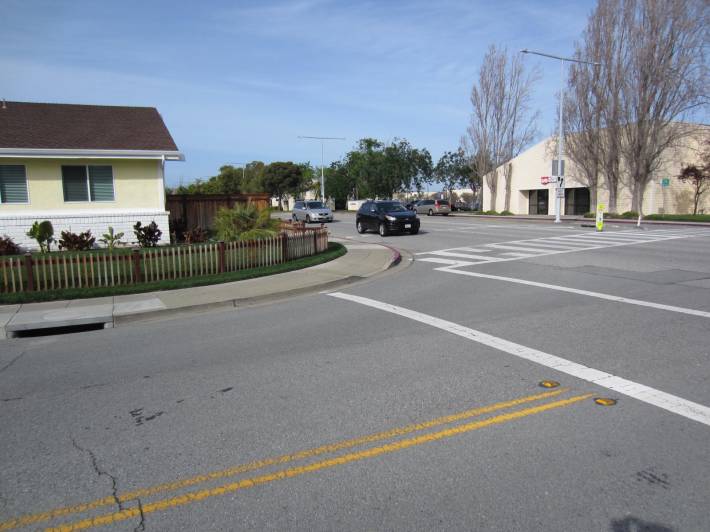
Retired San Francisco Police Department Lieutenant John Mahoney, who has lived two blocks from the intersection since 1969 and spent 15 years as a motorcycle officer assigned to traffic enforcement duty, explained that drivers turning from either left or right from Port Royal can't see down Edgewater without partly blocking it's right lane, while northbound drivers on Edgewater can just begin to see the signal at Beach Park Boulevard ahead as they pass Port Royal, causing them to lose focus on the crosswalks there. Southbound drivers on Edgewater making u-turns on Port Royal to access the Edgewater Place Shopping Center create yet another simultaneous hazard, all while many children and seniors are walking across Edgewater at busy times.
"When the green light goes off at Beach Park you better get out of the way, and you have to watch out for the left turner southbound turning in behind Chevy's," said Mahoney.
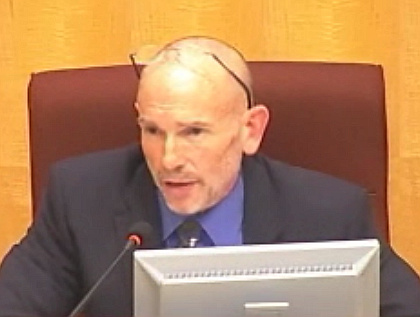
He also said that vehicle speeds at the intersection are too high, and recounted a well-known incident a few years ago in which a speeding driver crashed into the living room of the house on the intersection's southwest corner, which now features a brick and steel wall around its front lawn.
"If there's another accident at that intersection and cars jump the curb, they're going to take people out," Mahoney warned, explaining that many more children are crossing Edgewater than in the past due to growing schools and churches located to the north and thriving family-friendly businesses in the adjacent shopping center.
"When I first moved to Foster City I realized that intersection is incredibly dangerous," said neighborhood resident Lisa O'Malley. "I cautioned my boys to never cross there."
An analysis conducted by Assistant Civil Engineer Leah Edwards and presented to the Foster City Traffic Review Commission in June 2012 considered stop signs, yield lines, pedestrian-activated flashing lights, and even removing the crosswalk. Both stop signs and flashing lights were found to be unwarranted by state standards, and removing the crosswalk was rejected because it would endanger pedestrians. Despite this, Mayor Bronitsky asked city staff to consider it anyway.
"I think closing the crosswalk would be a fairly minimal effort on our part," replied Public Works Director Brad Underwood. "We could remove the signs, black out the pavement markings, and install some barricades," he explained. "I think that's a do-able solution. If you install a stop sign, it's difficult to take it out if you decide you don't want to have it."
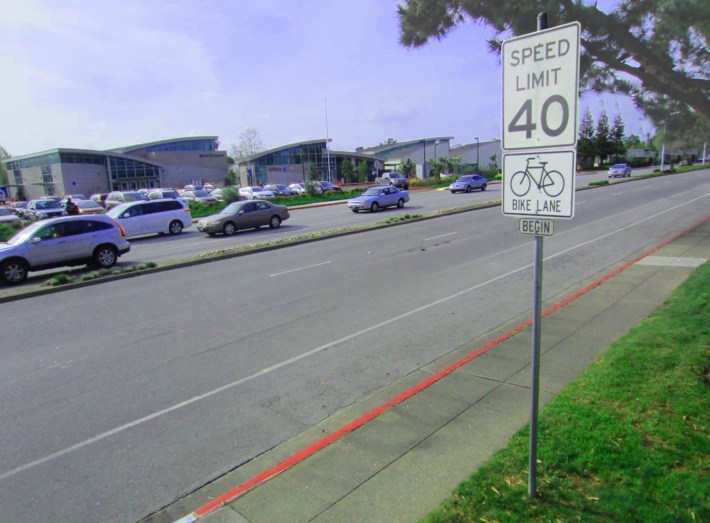
The City Council then voted 3-1, with Okamoto opposed, to remove the crosswalk and install pedestrian barricades. Council Member Herb Perez abstained, saying he cannot vote because he owns a business -- a children's martial arts studio -- in the Edgewater Place Shopping Center located near the intersection.
Fifteen residents spoke out against the crosswalk closure at the March 3 City Council meeting, including two parents with their three teenage children. The council reversed its decision to remove the crosswalk and approved flashing lights instead, the next cheapest option, despite the lights having been found by city staff to be unwarranted by state standards in its June 2012 report. The flashing lights will cost the city about $25,000 to install.
Residents said the flashing lights simply won't work. "I would recommended something that brings traffic to a stop," said Mahoney, "so that pedestrians and vehicles can get across." John Boessnecker, another retired police officer who lives nearby, agreed. "This intersection needs a four-way stop sign," he said. "These [flashing] lights are not going to cut it."
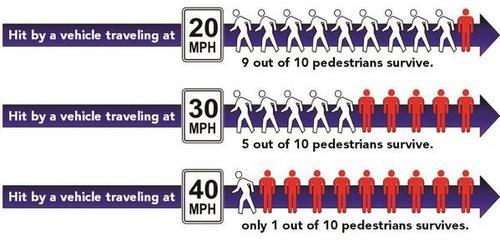
Police Chief Matthew Martell said that his records show January 24 was the first time a pedestrian was hit by a car at Edgewater and Port Royal in 12 years, and that collisions can't always be prevented.
"Accidents do happen whenever you have cars and pedestrians sharing the roadway," commented Martell.
"I don't want to see this ever happen again to anyone," said Lisa O'Malley, of the crash that hospitalized her 17-year-old fellow neighborhood resident on January 24. "And we can do something about it."
Residents are now pushing for broader traffic safety solutions that actually work, not only at Port Royal but everywhere in Foster City. The City Council is scheduled to review its traffic safety policies and programs at its meeting on March 24.





